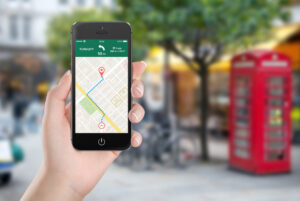ST held its Developers Conference on October 4 in Santa Clara, California. In anticipation of this event, we published a series of blog posts to preview some of the sessions’ topics and introduce the engineers, managers or experts that made this day special.
The number of marriages saved by GPSes is unknown, but it is undeniable that the advent of navigation systems has prevented many marital fights over missed exits, wrong turns, and the simple, but powerful, denial that one is lost. With the years, smartphones overtook big stand-alone devices, and are now giving way to smartwatches. There are also more ways than ever to pinpoint our exact location on this earth by using satellites, cell towers and Wi-Fi access points, which has led to the creation of popular features, such as checking in your favorite point of interest to share your experience on social media, or geotagging your photos to remember where you took them.
The Necessity of Pedestrian Dead-Reckoning

However, there are still places immune to the signals needed to locate our devices, rendering them blind. A study published in 2012 in the Journal of Neuroscience showed that when humans lose one of their senses the brain rewires neural pathways to compensate, a phenomenon known as neuroplasticity. When it comes to our mobile products, a similar event takes place as the multitude of sensors take over to track the user’s movements. This is known as Pedestrian Dead-Reckoning and Mahesh Chowdhary is the “neurosurgeon” of your electronic platform who ensures devices compensate for the lack of positioning systems.
Mahesh is the Director of Strategic Platforms and IoT applications, and a Technical Fellow at ST. His team is responsible for developing software solutions for the many ST sensors available today. This is how he’s come to work on Pedestrian Dead-Reckoning (PDR), a process that uses data from an accelerometer, a gyroscope, a magnetometer, and a pressure sensor, to determine the distance and direction traveled by a user in a three-dimensional space while positioning systems are unavailable or inaccurate. Hence, the mobile device can still track the user to provide an accurate location and update the mapping system until the GPS signal returns, or it can combine PDR with imprecise positioning data to greatly increase accuracy.
Pedestrian Dead-Reckoning Made Simple
In his presentation entitled Pedestrian Dead-Reckoning, Mahesh will focus on the software solutions that work on Android and iOS to implement this process and remove all the complexities associated with this technology. His team has already done all the work to build the calibration monitoring logic that ensures the data’s accuracy, which greatly simplifies development of applications that take advantage of PDR. In a very real way, this means for example that developers will benefit from algorithms that are smart enough to know when there are magnetic distortions in the environment to prevent recalibrating the magnetometer at a time when it would just throw it off. Mahesh has also worked on solutions that account for the fact that the orientation of a phone in a pocket may influence its internal compass, so developers don’t even have to worry about such hurdles.
Although ST’s magnetometers and gyroscopes have the lowest noise level in the industry, not every device in need of PDR will use them or even have all the sensors, yet the tools will provide ways to get the most accurate tracking possible out of lesser configurations. Furthermore, ST has done all the work in user activity detection so developers do not have to conceive complex algorithms and models to count steps or detect if a device is simply going up or down the floors of a building.
To Be Ready
Mahesh will demo these technologies using a widely available smartphone to showcase how ST can use Android or iOS APIs to offer PDR as well as contextual awareness, the topic of Mahesh’s other presentations. Libraries and documentation will be available to attendees, but anyone wishing to make the most out of this session can already get a quick understanding of Google’s Awareness API or the Location and Maps Programming Guide for iOS as well as Apple’s Core Location Framework. Furthermore, Mahesh’s YouTube video on PDR, seen above, will help you grasp the key concepts and the algorithms involved in the process. Finally, the demos will rely heavily on ST’s SensorTile, the development platform that packs a multitude of sensors on a 13.5 mm x 13.5 mm board.
Mahesh Chowdhary is currently scheduled to give the following presentations
- Pedestrian Dead-Reckoning
- Contextual Awareness
You can learn more about the other sessions, get the agenda, or register by visiting the website for the ST Developers Conference.
